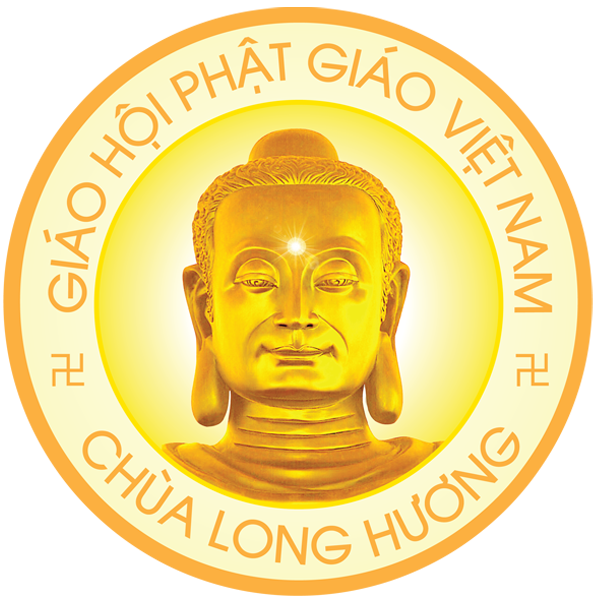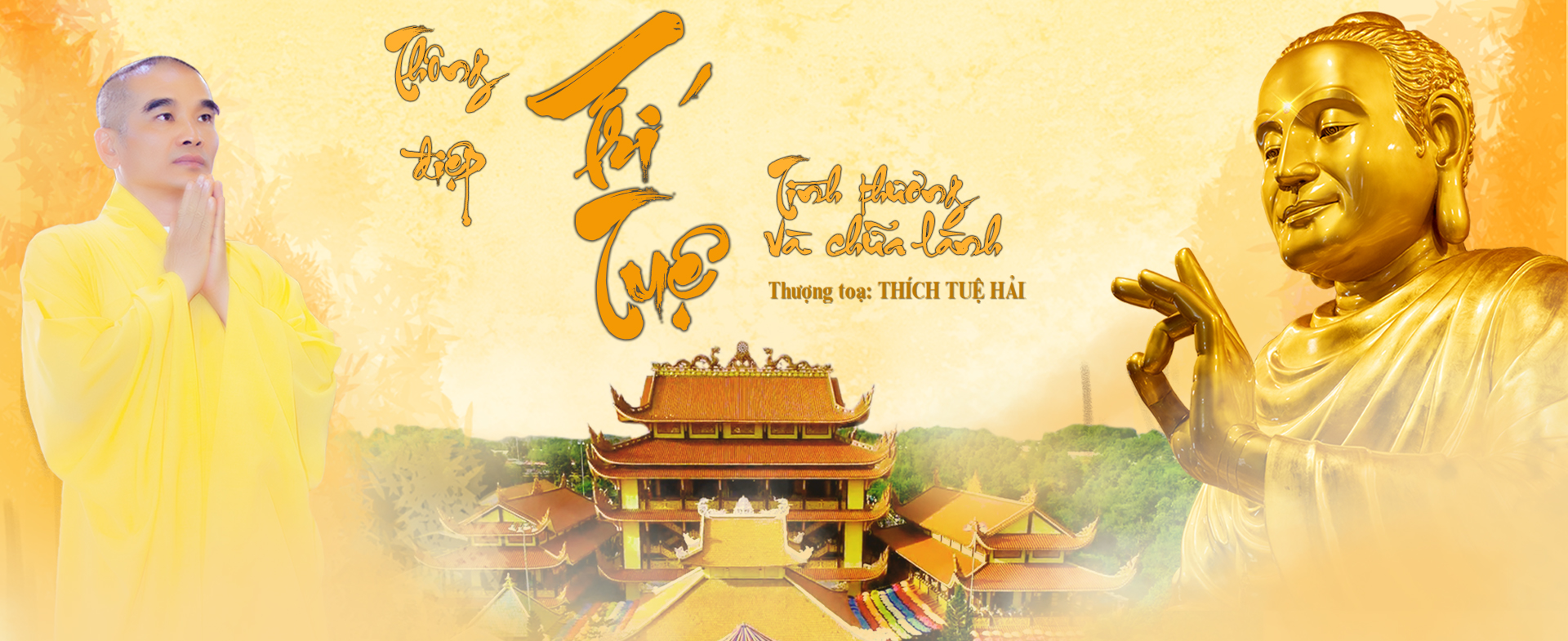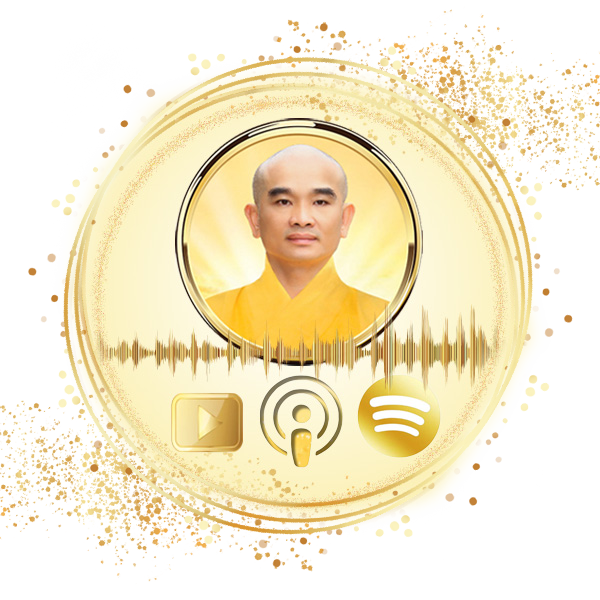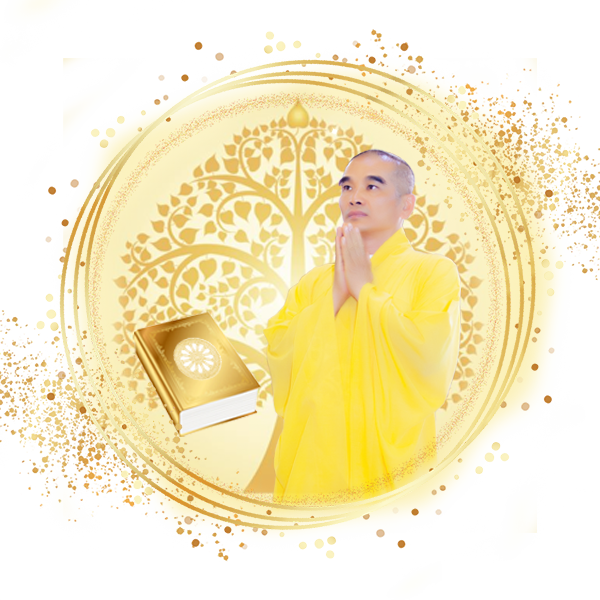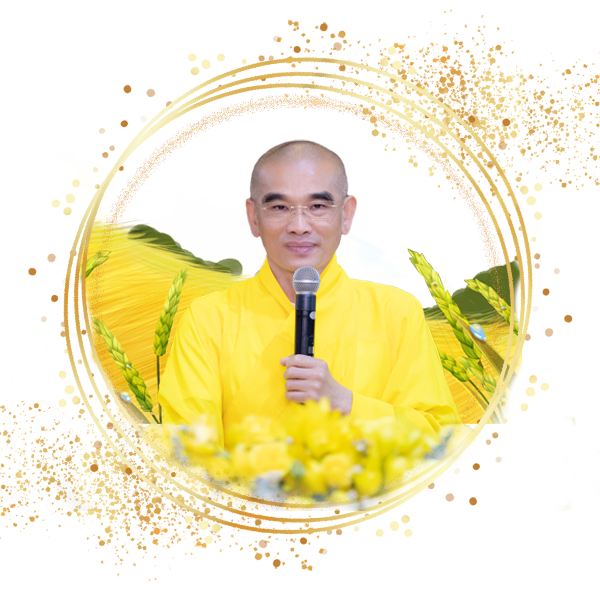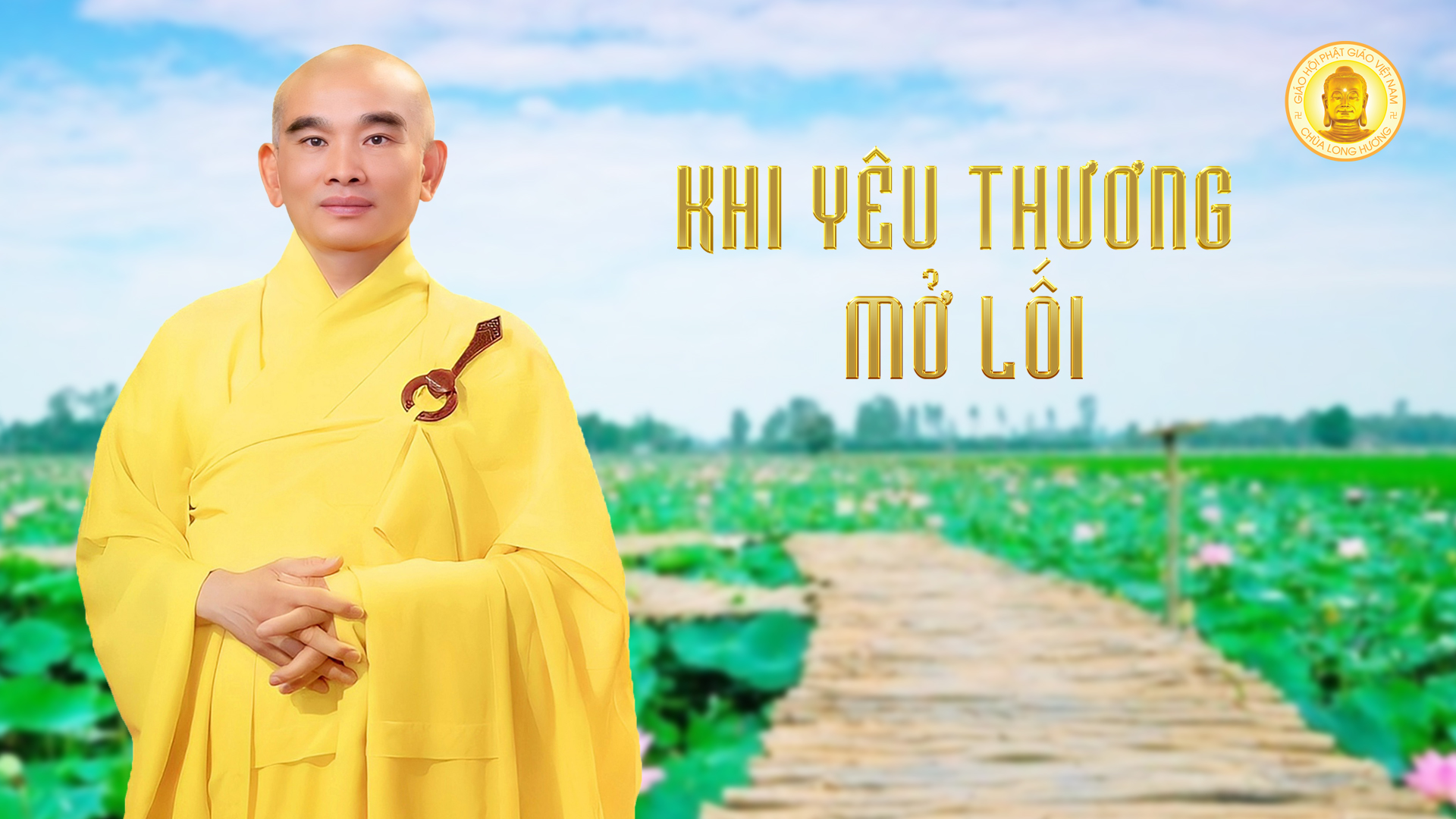CHÚNG TA CÓ PHẢI LÀ NGŨ UẨN CHĂNG?
- Đăng bởi: Ban Biên Tập
- |
- 19/11/2023
CHÚNG TA CÓ PHẢI LÀ NGŨ UẨN CHĂNG?
Tìm hiểu về các đặc tánh
và sự vận hành của ngũ uẩn
Luận giảng của THIỀN SƯ THÍCH TUỆ HẢI
(VÔ TRỤ THIỀN SƯ)
Ấn bản Việt ngữ 2023
EKAYANA ZEN PUBLICATIONS
CHÚNG TA CÓ PHẢI LÀ NGŨ UẨN CHĂNG -2023
Ở trong bản Kinh Tinh Túy Bát Nhã Ba La Mật Đa (thường được biết dưới tên Tâm Kinh), đầu tiên là Đức Phật đang muốn nói đến một người “đã vượt thoát ngũ uẩn.” Vậy ngũ uẩn là gì? Nói theo kiểu nhà quê dễ hiểu nhất, ngũ uẩn là thân tâm của mình.
Sắc là sắc thân của mình; thọ, tưởng, hành, thức là tâm của mình. Người thấy “ngũ uẩn giai Không” là thấy thân này hoàn toàn không có. Ngũ uẩn vốn dĩ là hiện tiền Bát Nhã! Ngũ uẩn vốn là chân như, vốn là thanh tịnh
Nếu như chúng ta còn thấy có thân là chưa có trí tuệ Bát Nhã thì chúng ta chưa vượt thoát khỏi vướng chấp khổ đau. Cho nên đối với thân tứ đại này thì ngài Quán Tự Tại thấy nó là Không. Cái Không này không phải là “không” so với “có” mà nó chính là rỗng lặng, thanh tịnh tuyệt đối. Cái Không này là không “tướng có” và cũng không “tướng không”. Hay nói cách khác, đây là “cái Không của tự thể”. Vì tự thể Không, nên từ chỗ Không Tướng, không có tướng sắc và không có tướng không, nên nó mới sanh ra tướng sắc và tướng không.
Cho nên ở đây, Bậc Quán Tự Tại thấy rõ ràng rằng thân này, tâm này chính là hiện tiền Bát Nhã, chính hiện tiền này là Không Tướng, chính hiện tiền này là Như Như. Đó là cái thấy nhìn của một bậc được gọi là thâm nhập Bát Nhã. Khi người nào thâm nhập Bát Nhã thì mới đủ trí tuệ thấu suốt tất cả ngũ uẩn là Không, tức là thân tâm này là Không.
Khoảnh khắc hay ra Bát Nhã để tan biến thành Bát Nhã thì khoảnh khắc ấy “thông thấu” năm uẩn là Không. Không phải là “chiếu kiến” như cách nói trong bản dịch Tâm Kinh xưa nữa, mà ngay khi trí tuệ “Bát Nhã hiện tiền,” ngay khoảnh khắc hiện tiền này, đó chính là Bát Nhã. Ngay nơi khoảnh khắc hiện tiền này, chúng ta thông thấu năm uẩn là Không. Ở đây không phải là sự hiểu biết nữa mà là sự “tỏ thông thấu suốt” Bát Nhã.
Tỏ thông thấu suốt Bát Nhã thì năm uẩn từ xưa tới giờ cũng không hề có sự vướng đọng. Chúng ta lầm nên thấy có sắc, thọ, tưởng, hành, thức, chứ nếu thấy đúng sự thật rồi thì ngũ uẩn là thông thấu, là hiện tiền. Sự tỏ thông này không có nghĩa là sửa đổi, là thay đổi cái thấy nhìn, mà vì ngũ uẩn từ xưa tới bây giờ vốn dĩ là Không. Cho nên, khi trí tuệ Bát Nhã hiển lộ thì sự tỏ thông của trí tuệ Bát Nhã làm hiển hiện cái hiện thực của ngũ uẩn này, mà ngũ uẩn này vốn dĩ là Không, chứ ngũ uẩn chưa từng có. Lầm thì có ngũ uẩn, ngộ thì ngũ uẩn là Không. Chứ không phải là “chiếu kiến”, không phải là “hành thâm”. Chuyện đó quá dư thừa và không đủ sức để nói chuyện Bát Nhã ở đây.
Nói đến Bát Nhã là nói đến cốt lõi của trí tuệ, mà cốt lõi của trí tuệ là sự thông thấu toàn bộ pháp giới này vốn dĩ là Không Tướng, là Thật Tướng. Pháp giới này là hiện tiền, là chân như pháp giới, không có cái khác. Nếu thấy cái khác thì không phải là có trí tuệ Bát Nhã. Cho nên, ngay khi trí tuệ Bát Nhã hiện tiền thì ngũ uẩn là Không. Nếu chúng ta vẫn còn thấy “có” thì chưa phải có trí tuệ Bát Nhã.
Như vậy, vị Quán Tự Tại là một Bậc giác hữu tình, nên trí tuệ Bát Nhã đã tỏ thông rồi. Ngay khi trí tuệ Bát Nhã tỏ thông để có thể tự tại trong sanh tử, Ngài thâm nhập được Bát Nhã trí. Chính Bát Nhã trí này thấy được sự thật vốn có của ngũ uẩn là Không. Đó là sự thật vốn có, chứ không phải là “tôi công phu” để được ngũ uẩn là Không. Cũng không phải “hồi trước ngũ uẩn là có, mà do tôi tu mấy chục năm, mấy chục đời, mấy vạn kiếp” nên bây giờ ngũ uẩn là Không. Không phải như vậy.
Ở đây đang muốn nói đến Bậc giác hữu tình là bậc có trí tuệ đã giác ngộ, hoàn toàn tự tại rồi. Nên Ngài “thấu suốt” tự thể của năm uẩn vốn dĩ là Không, chứ không phải do “công phu”, không phải do “quán chiếu”, không phải do “hành thâm”. Dùng các từ ngữ như vậy là quá xa đối với bây giờ, nên chúng ta phải quên những cái cũ để có thể tiếp nhận được “Bát Nhã hiện tiền”. Đối với cái cũ mà chúng ta còn vướng đọng bất kỳ chỗ nào thì Bát Nhã cũng không thể hiện tiền được.
Cho nên, đối với Đấng tôn quý giác hữu tình Quán Tự Tại là người đã giác ngộ, mà đã giác ngộ rồi thì hiện thực hiện tiền này là tự tại vô quái ngại, là không vướng đọng, là không hề có bất kỳ chỗ nào có thể tồn đọng lại được, là người tự do giải thoát hoàn toàn nhưng không đi đâu về đâu. Nếu có đi đâu về đâu thì không phải là người tự tại. Tự tại là ngay hiện tiền này hoàn toàn vượt thoát. Cho nên mỗi mỗi hiện tiền đều là tự tại, tự do, mỗi mỗi hiện tiền đều là Bậc giác hữu tình, mỗi mỗi hiện tiền chính là Bát Nhã, mỗi mỗi hiện tiền ở đây là không có sắc, thọ, tưởng, hành, thức, tức là không có ngũ uẩn.
Khi học đạo chúng ta phải hiểu rõ, hiểu tường tận năm uẩn này, vì nếu như đối với năm uẩn này mà chúng ta không thấy hết, không hiểu hết, không nhận định cho đúng thì chúng ta vẫn bị lầm trong công phu.
Sắc uẩn
“Sắc uẩn” là gì? Là thân tứ đại của mình, nó nhóm chứa bốn điều: đất, nước, gió, lửa. “Đất” là chất cứng chúng ta có thể chạm được như tóc, lông, răng, móng, da, thịt, gân, xương, tủy, não, hoành cách mô… “Nước” là ướt; cái gì ướt là nước, như mồ hôi, nước máu, nước mủ, nước tiểu, nước gì trên cơ thể chúng ta chạm tới mà ướt thì được xem là nước. “Gió” là động. Chúng ta còn lưu thông huyết mạch, dòng tuần hoàn còn trôi chảy được, còn hít vô thở ra được, còn cử động được, còn sống, còn động là có gió. “Lửa” là hơi ấm. Bất kể sinh vật sống nào trong vũ trụ này cũng đều có bốn điều này, không cái gì có thể thoát ra được.
Sắc uẩn này, trong Kinh Lăng Nghiêm, Đức Phật giải thích ra sao? Ví dụ như bây giờ ở giữa hư không này, nếu chúng ta bật hộp quẹt thì nó cháy, bật bếp ga thì bếp ga cháy. Như vậy lửa có ở khắp hư không này, tùy theo tâm chúng ta muốn lấy lửa kiểu gì. Nếu muốn lấy lửa chín nồi cơm thì lửa đủ cháy trong bếp lò nấu cơm, muốn lửa cháy nhà thì lửa phựt cháy nhà. Lửa tùy theo tâm của mình. Vậy theo Kinh Lăng Nghiêm, Đức Phật giải thích tứ đại là “Như Lai tàng tâm trùm khắp pháp giới, tùy theo tâm của chúng sanh mà ứng với lượng hay biết”.
Cho nên, Bậc Quán Tự Tại thấy rõ ràng ngũ uẩn này là Như Lai tàng tâm, thấy sắc là Như Lai tàng tâm; thọ, tưởng, hành, thức cũng là Như Lai tàng tâm. Vậy khi thâm nhập Bát Nhã rồi thì tứ đại cũng chính là Như Lai tàng tâm. Đây là bước đầu. Ngay ở bước đầu, trí tuệ Bát Nhã đã nói lên cảnh giới siêu tuyệt của người đã vượt thoát hoàn toàn trong sanh tử, vượt thoát những thấy biết, vượt thoát những kiến thức sai lầm từ xưa tới giờ để đạt tới trí tuệ toàn hảo, thì mới đủ sức thấy được sắc này chính là Như Lai tàng tâm. Sắc này chính là Bát Nhã, sắc này chính là hiện tiền rỗng suốt, không có một sự vướng mắc nào.
Sở dĩ chúng ta chưa đạt tới chỗ này là vì chúng ta thấy sắc thân này là còn, là có, là sống, là chết. Nhưng đối với người giác ngộ rồi thì không có chuyện sống chết của thân này. Họ thấy tứ đại bên ngoài cũng như tứ đại trong thân chưa có một kẽ hở hay một khoảng cách nào. Cũng như trong Tứ Niệm Xứ, khi chúng ta quán thân thì phải quán nội thân và ngoại thân, chúng ta sẽ thấy được sự thật là cái ướt bên ngoài cũng như cái ướt nơi thân này chưa có khoảng cách ly. Cho nên đất, nước, gió, lửa của thân mình và đất, nước, gió, lửa của vũ trụ này cũng vốn dĩ là Như Lai tàng tâm thanh tịnh trùm khắp pháp giới chứ không có cái gì là ô trược.
Khi trí tuệ Bát Nhã hiện tiền, như đối với cái nhìn của ngài Quán Tự Tại, một Bậc giác ngộ thì ngài thấy được hiện thực của thân ngũ uẩn. Cũng như bây giờ chúng ta đang nói đến thân tứ đại thì nó vốn là thanh tịnh, rỗng lặng, là Không Tướng. Cho nên hiện tướng của thân ngũ uẩn này cũng chỉ là một ảo tướng do tâm thức xây dựng hình thành mà thôi. Tâm thức cũng là cái ảo, cái ảo để hình thành ảo thân chứ hiện thực thì không có ảo thân này.
Khi người ta nhìn ra được sự thật rồi thì tất cả các pháp từ xưa tới giờ vốn dĩ là bất sanh bất diệt, chưa từng có chuyện sanh diệt. Nhưng mình còn lầm và với cái nhìn của phàm phu thì thân có già, có bệnh, có chết, có sanh, có tử. Đó là cái nhìn sai lầm, là cái nhìn của vô minh. Chỉ một thoáng thấy “có”, thấy “không” thôi là chúng ta rớt sâu xuống tầng sâu của vô minh rồi. Nhưng nói theo Bát Nhã thì chúng ta phải thấy rõ rằng thân tứ đại của chúng ta vốn dĩ là thanh tịnh, vốn dĩ là Như Lai tàng tâm trùm khắp pháp giới.
[Đọc tiếp bản PDF]
^2023 v3 Viet ARE WE THE FIVE AGGREGATES A5
ARE WE THE FIVE AGGREGATES?
Understanding the Five Aggregates,
Their Characteristics and Their Workings
Commentary by ZEN MASTER THÍCH TUỆ HẢI
English translation by Milam Sudhana
Edited by Oliver K. Luu
EKAYANA ZEN PUBLICATIONS
ARE WE THE FIVE AGGREGATES 2023
In the Essence of Prajñāpāramita (commonly known as the Heart Sūtra), the Buddha was talking about someone who has transcended all five aggregates. What then are the five aggregates or five heaps? If we speak of them in a most unpolished way to make them easiest to understand, the five aggregates are our body and mind.
Form, the aggregate of form, is our body form, and sensation, perception, mental formation (karmic formation), and consciousness are our mind. Anyone who directly experiences and directly sees the “five aggregates as being Void” means they are in a noumenal state where their bodies as vivid yet completely Void at the same time. Intrinsically, the five aggregates are Prajñā in the vivid presence, pure Suchness and immaculate. It is due to the nature of emptiness that everything can come into existence, yet, in actuality, it lacks a solid independent self.
If we still see that there is a body, then it means that we do not yet have the Perfect Wisdom and we have not yet transcended grasping, clinging and suffering. The Naturally Free and Unobstructed Seeing One, on the other hand, directly penetrates his physical body of four elements (earth, water, wind and fire) as being Void. Void does not mean that there is “nothing” in contrast to a substantial, solid form, but herein, Void points to the absolute empty-tranquil-immaculate state of being. This Void is neither the “sign of form” (existence) nor the “sign of emptiness” (non-existence). In other words, this is “the Void of our innate nature.” Because this nature is innately Void, thus, from this very state of Voidness, Singless Void or Signlessness, there is neither form nor formlessness, it can give birth to both existence and non-existence at the very same time!
Therefore, the Awakened Being, herein, had a direct knowing with lucid clarity that his body and mind is, indeed, Prajñā in the pristine presence. This presence is Void and this presence is Suchness. That is the direct realization of a person whom we can say has “immersed in” Prajñā. Only those who would have enough wisdom can penetratively fathom the five aggregates, that which is their body and mind, as Void.
That is, at the very precise mental momentness, the Awakened Being came upon Prajñā in order to totally dissolve which he “thoroughly penetrated” all five aggregates as Void. I must say that hereby, it is not “to observe through contemplative insight,” as usually expressed in the classic translation of the Heart Sūtra, but rather, precisely at the momentness of pristine presence when this Perfect All-Transcendent Wisdom manifests, that presence itself is, indeed, Prajñā! Here, it is no longer a cognitive understanding and no longer the conscious mind’s all-knowing, but rather the direct, lucid and penetrating all-pervasive totality true knowing.
If we clearly, penetratingly fathom Prajñā, then we can see that since time immemorial until now, there has never been any clinging or retention in the five aggregates. We mistakenly perceive everything so we have form, sensation, perception, mental formation and consciousness, yet when we finally see the truth as it is, then the five aggregates are innately, thoroughly unobstructed and themselves are the vivid presence. This brightly clear penetration does not mean that we are changing or altering our seeing and our view, but it simply means that since the past until now, our five aggregates inherently have always been Void.
Thus, when Prajñā vividly emerges then its lucid clarity will reveal the true existence of the five aggregates. The five aggregates have never had any substantial existence. When there is confusion, there are the five heaps; when there is direct knowing and direct penetration, then the five heaps are Void. This has nothing to do with “to observe through contemplative insight” nor “to deeply course in,” because all of those expressions are superfluous and lack the efficacy to express about Prajñā.
Furthermore, when we talk about Prajñā, the core essence of perfect wisdom, we are hereby talking about the unobstructed penetration of the whole sphere of phenomenal truth, the dharmadātu that inherently is Voidness – a state of clear and dynamic manifestations yet signless, devoid of any characteristic signs. This dharmadhātu is nonetheless the pristine presence, the realm of True Suchness devoid of any dissimilarity! That is the true equanimous, non-discriminatory state. So if we still see dissimilarities in that expanse of Suchness, then we do not possess the Prajñā wisdom.
This Prajñā itself clearly sees the intrinsic perfect truth of the five aggregates and the phenomena in the state of Voidness. It is not that now we have to “engage in practicing exertion” that the five aggregates become Void! Similarly, neither did the five aggregates always exist substantially, and then due to our practicing for a few dozen years, or for ten-thousand lives that finally, the five aggregates now become Void. It is not at all like that!
We are hereby talking about an Awakened Being, someone who has acquired the enlightened wisdom completely without effort. Thus, he can “penetratingly fathom” the five aggregates. This does not come from “practicing exertion” (Viet. công phu), nor due to his “observance through contemplative insight” (Viet. quán chiếu), or through his “practicing in the deep course” (Viet. hành thâm). All of those classical terminologies are far-off from what is happening right now in this precise moment! Therefore, we need to set aside these old ideas in order to become receptive to Prajñā in this very vivid presence. If there is still anything of old that we are clinging to, then Prajñā cannot manifest in the presence.
Therefore, when an Awakened One finally attains complete enlightenment, nothing can be caught or retained in this state of pure, unadulterated beingness, and there is no chance for any residue of bondage or fear to possibly remain; he or she is freely, utterly liberated, where there is no coming, no going, no form, sensation, perception, mental formation and consciousness. On the other hand, if right now we see that there is still body and mind, and all sorts of other things, then it means that we are still trapped in the five aggregates.
When we study the Dharma and especially the Essence of Prajñāpāramita, we need to clearly understand the five aggregates – the components of our body and mind (form, sensation, perception, mental formation and mental consciousness), because if we do not completely see, understand, discern, and comprehend them correctly, we would be totally confused in our practice.
The aggregate of form
What is the “aggregate of form”? It is our physical body that consists of the four elements: earth, water, air and fire. “Earth” is anything that is hard which we can touch, such as head hair, body hair, teeth, nails, skin, flesh, tendon, bone, marrow, diaphragm, etc. “Water” is wet; anything that is wet is water, such as sweat, blood, pus, urine, etc. “Air” is movement. If our blood is still circulating, our circulatory system is still flowing, and if we can still breathe in and out, are in motion, stay alive, or have any movements, it is because there is air. “Fire” is body warmth. Any living creature in this universe without fail must have all of those four elements, and no one can possibly evade them.
How did the Buddha explain about the aggregate of form in the Śūraṅgama Sūtra? For example, in the middle of space, if we flick a lighter, then the lighter will spark, and if we flick a gas burner, then the burner will spark. Thus, fire exists everywhere in open space; however, it depends on our mind and what specific kind of fire we want to see. If we want to have enough fire for a pot of rice to be well cooked, then there would be enough fire on the burner to cook that rice, but if we want to have enough fire to burn down a house, then a fire will blaze to burn it down. Therefore, the fire corresponds with our mind. Thus, in light of this, the Buddha taught in the Śūraṅgama Sūtra that the four elements are “the Tathāgatagarbha pervading the whole dharmadhātu, emanating in equipollence with the magnitude of the beings’ understanding, being revealed according to the beings’ karma.”
In Buddhism, Tathāgatagarbha refers to the fully awakened matrix and essence, the eternal and immutable matrix of all reality, and the womb of the absolute. In short, it is the very core the essence of Buddhahood, the ultimate all-transcendental state.
An awakened being, therefore, can clearly, directly, and lucidly see the five aggregates as the Tathāgatagarbha and the four elements of nature (earth, water, air and fire) as the Tathāgatagarbha. In the very beginning, the perfect wisdom speaks of the peerless realm of an all-transcendental person who has gone beyond the cycle of birth and death, beyond all mundane knowledge and all past and present misconceptions in order to have a direct knowing of this form as the empty, transparent pristine presence without a single trace of clinging.
The reason we have not yet reached this realization is that we still see that our physical bodies still exist, that they are substantial, and that there is birth and death. However, according to an enlightened being, this bodily form has no arising (no birth) and no ceasing (no death). An enlightened being has a direct knowing that there is no gap or division between the outer four elements in the cosmos and the four elements inside our bodies. Just like in the Four Foundations of Mindfulness practice, when we meditate, we have to contemplate on the inner body and the outer body, and we will come upon the truth that the wetness on the outside does not have any rift with the wetness inside our bodies. Therefore, the earth, water, air and fire elements of our bodies, and the earth, water, air and fire elements of this universe are inherently the Tathāgatagarbha, perfectly pure, ubiquitously pervading the whole dharmadātu, with nothing being defiled.
In the view of an awakened being when the perfect wisdom emerges in the vivid presence, he or she directly penetrates the reality of the five aggregates, as well as the four elements of the body, as intrinsically immaculate, tranquil and empty, and arisen from the state of Voidness. Therefore, the appearance of the five aggregates is a false appearance formulated by our mental consciousness. Our mental consciousness is an illusion as well, and it constructs the illusive body whereas in reality, this illusive body does not exist.
Once one has a direct knowing of this truth, one will realize that all dharmas – all phenomena ever since the past until now – are inherently unborn, unceasing; there has never been birth and death. However, we are still being deluded, so in the view of mundane people like us, we have bodies, old age, sickness and death, and there is life-and-death without fail. However, this is a confused and deluded view, a view of ignorance. Even if, for an instant, we see that there is “existence” versus “non-existence,” then we have already fallen deep into the domain of ignorance. However, if we want to speak the language of Prajñā, we need to see that our body of four elements is intrinsically pure, and it is none other than the Tathāgatagarbha, pervading the whole sphere of phenomenal truth.
Xin mời xem phiên bản sách Anh ngữ phát hành trên mạng Amazon.com (English book version on Amazon):
